Ruining a watercolour painting and wasting good-quality paper is an awful experience.
This tragedy transpires as soon as you lose focus and concentration. When you lose sight of the bigger picture, you obsess over the fine details to the point of destroying the artwork.
So, how do you avoid overworking watercolour?
Overworking watercolour is a result of over-blending and over-detailing a painting to such a degree that the central focus or overall aesthetic is ruined. Often enough, overworking a painting is a consequence of not having a specific goal or process to render the artwork successfully.
But fear not! There are many savvy strategies that will help you reduce your chances of messing up a painting.
Keep reading to discover these savvy watercolour secrets.
Table of Contents
1. Before You Paint, Start with A Plan
Learning how to avoid overworking watercolor is easy once you understand this simple strategy: Begin with the end in mind.
Essentially, this means that you should have a vision of what you want your painting to look like before you even begin painting.
So, before you begin painting, sketch some thumbnails of your subject matter. Or create a colour swatch and paint some studies.
Doing so helps you visualize your painting. It helps you understand where you want to place highlights and shadows; how you want to set up the composition.
Often enough, overworking watercolour is a result of not knowing what direction you want to take the painting in.
The next time you sit down to paint, do yourself a favour and take a bit of time to plan. After all, you don’t want to mess up due to a lack of preparation.
To learn more about preparing yourself for success with watercolours, check out this blog post to learn about the best watercolour habits that you should develop.
2. Upgrade Your Watercolour Paper
There are many reasons that lead to overworked watercolour paper, and one major factor is the fact that your paper is low-quality.
For example, low-quality watercolour paper is made of cellulose or wood pulp. This type of paper isn’t the ideal for serious watercolour painters for the following reasons:
- When watercolour pigments dry, they will appear duller
- The paper is likelier to warp and buckle since it’s not thick enough to handle much water
- Not being made of 100% cotton means the paper is less absorbent
- The paintbrush bristles are more likely the tear the paper
Therefore, if you’re painting on cellulose or wood pulp paper, I’d advise you to only use it for quick swatches and warm up exercises.
Instead, invest in good-quality and professional watercolour paper.
Look for paper that is 100% cotton paper it’s the most absorbent. And if you’re new to buying high-quality paper, start off with the cold-pressed variety since it’s the most versatile.
Related: If you’d like to learn more about good-quality watercolour paper, check out this popular list of the best watercolour supplies for artists.
3. Take A Break from the Painting
Another reason why you overwork your watercolours is because you’re exhausted from painting.
I’m certain that you can relate to this problem.
For instance, when you’re not getting the results you desire, you’re more likely to obsess over the details. This makes you feel frustrated and stressed, so you are more likely to overwork your mistakes.
So, when you feel the first signs of frustration, the best thing to do is to stop and take a break.
Walk away from the painting and wait at least a few hours before you return to it. If possible, wait until the next day to revisit your artwork.
When you return to your painting with fresh eyes and a new perspective, you’ll be able to analyze and identify your errors more easily.
Then, it will become easier for you to understand what you need to do or stop doing in order to fix you watercolour mistakes.
4. Consult Reference Images
If you struggle with coming up with painting or composition ideas, then you should find free reference images for guidance.
You can find all sorts of reference images ranging from landscapes to portraits; from buildings to common household items.
This way, you begin with the end in mind. You already know where the highlights and shadows should be placed.
You already understand the colour palette you’ll be using and the range of tones you’ll be using to create contrast.
And best of all, you already know how to compose the image without taking a random shot in the dark and hoping your painting turns out well compositionally.
As a bonus, the reference image will help guide you whenever you feel stuck or unsure about what to do.
Basically, think of reference images as silent teachers that help you better understand the subject matter that you are trying to replicate in your own artwork.
Related: Following a tutorial with reference images also works well. So check out these 5 super easy watercolour tutorials for step-by-step instructions.
5. Paint from Light to Dark
It can be tricky figuring out how to fix overworked watercolor paper.
So, the best solution is to minimize the possibility that you’ll overwork your artwork. And one of the best ways to accomplish this goal is by painting from light to dark.
When you paint from light to dark, you start off with layers that are light, vibrant, and translucent. So, if you make a mistake, it’s easier to cover up since you can layer over the mistake to hide it.
Easy, right?
But keep in mind that you must wait until the wet layer has completely dried before you paint over it with a second layer.
Otherwise, if the layer is still damp, you run the risk of having both layers bleeding into one another. This will create a new problem in which you’ll have to figure out how to prevent muddy colours.
Take a look at the watercolour painting below to observe how the background layers were painted lightly and then were layered with darker paint in the mid and foregrounds.
6. Understand That Less is More
One of the most common limitations that plagues artists is perfectionism.
For artists, perfectionism stems from a lack of self-confidence. As a result, when an artist suffers from perfectionist tendencies, they’re more likely to overwork their artwork.
So, you might be wondering how you can avoid overworking watercolour as a perfectionist.
The easiest solution is to stop while you’re ahead. In other words, understand that less is more.
Adding more details won’t necessarily fix your painting. In fact, fussing over details often makes the artwork look worse.
Another way to deal with perfectionism is to resist the urge to fix every imperfection. Instead, trust your intuition as a creative individual.
That means you can leave the overworked painting alone and accept the imperfections. Or you can scrap the painting and start over.
There’s no shame in doing so. In fact, it’s a good way to learn from your initial mistakes.
For more information, check out this detailed article about how to deal with perfectionism as an artist.
7. Simplify the Painting
Many beginner watercolourists ask themselves, “Why are watercolours so difficult?“
Well, it’s not that watercolour is hard, per say. But rather, people have a tendency to overcomplicate the painting process. So the solution is to simplify your paintings.
To avoid overworking watercolour, you should follow these 3 important guidelines:
- Simplify the subject matter into larger shapes, then chisel away at each one to render the subject more accurately
- Limit your colour palette to reduce overwhelm
- Use fewer brush strokes to minimize obsessing over little details
By simplifying the painting process, you’re able to reduce stress and frustration. In other words, keep it simple and uncomplicated.
For instance, break down a tree into long rectangles and then chisel away at each shape to create the trunk and branches.
Or simplify the human head into an oval shape. Then break down a triangle for the nose, ovals for the eyes, and so on.
Note: When you’re painting from an energy that is calm and in flow with your creativity, you’ll paint more loosely. This will make your painting look less stiff and more organic.
8. Paint Within a Time Limit
Lastly, you can try painting within a specific time limit to help you speed up the painting process.
Why does this work?
Because if you limit your painting time to, let’s say 30 minutes, you have a shorter period of time in which to render your painting.
The time restriction forces you to be more intentional with every brushstroke and colour choice.
It gives you less time to worry about the small details and encourages you to paint from the heart, not the overanalytical brain.
So set your smartphone to 20 or 30 minutes or use a free online timer that can be found on YouTube.
Then ready, set, go!
If you’re ready to step up to the challenge, I encourage you to check out this simple monochrome watercolour painting tutorial that is designed to be completed within only 20 to 30 minutes.
Check out the painting below to see an example of the aforementioned monochrome tutorial.
9. Scrap the Painting and Start Over
Sometimes, you have to admit that you can’t avoid overworking watercolour once it has passed the point of no return.
That means the colours are muddy, opaque, and too dark to layer over. Or the paper has torn to a degree that can’t be undone.
Or perhaps you accidentally created a dull watercolour painting and you don’t know how to fix it.
In such cases, it’s better to just scrap the painting and begin a new painting.
There’s nothing to be ashamed of. I’ve messed up many, many paintings over the years. And you will, too.
But the key lesson here is to learn from the mistakes that you committed in your first painting.
For example, if you didn’t adequately preserve the white of the paper and that area got all muddy, be more intentional about where you lay down your brushstrokes.
Moreover, if you mixed pigments that appeared dull and lifeless, spend more time creating colour swatches and testing the paint mixtures before you begin painting.
Conclusion
In this article, you’ve learned about the best strategies to help you avoid overworking watercolour paintings.
It may take some time and practice to develop these important daily artistic habits, but they’re well worth the time and effort to develop.
Once these habits become second nature, you’ll be able to stop yourself from producing an overworked watercolour painting.
Or you’ll be able to more easily identify when to stop while you’re ahead and appreciate your painting for what it is regardless if it doesn’t look perfect.
That’s why they say practice makes progress.
Now I’m curious to know…
How do you deal with an overworked painting? Do you use any of the tips on this list, or do you have your own unique strategy? Share your thoughts in the comments below!
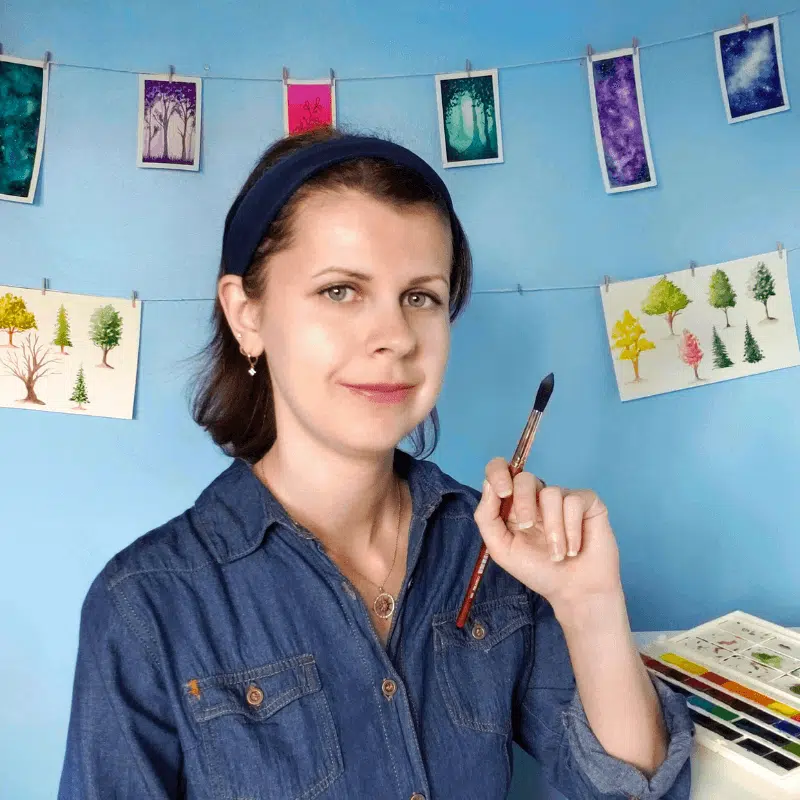
Miranda Balogh
Artist & Online Educator

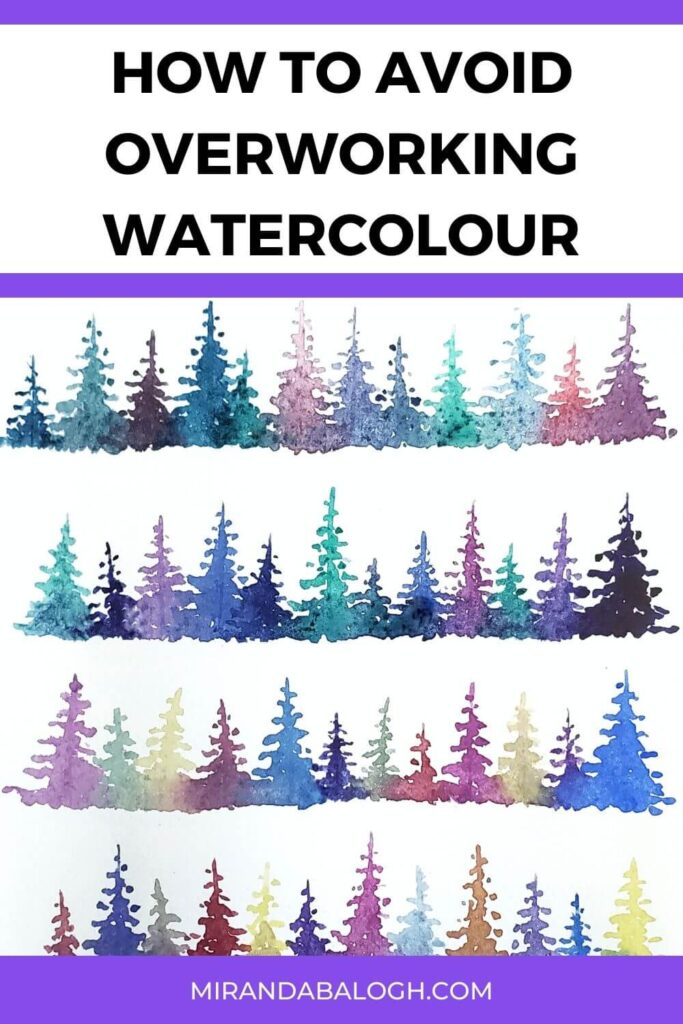
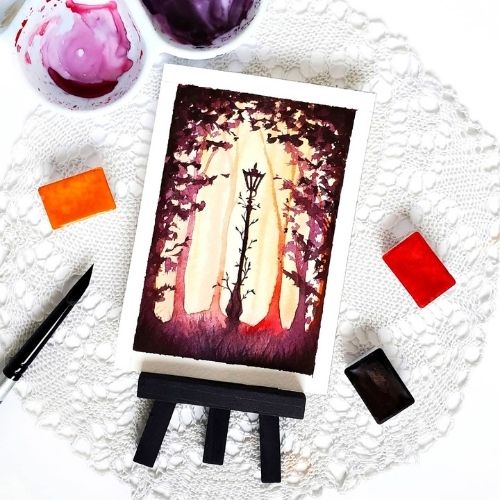
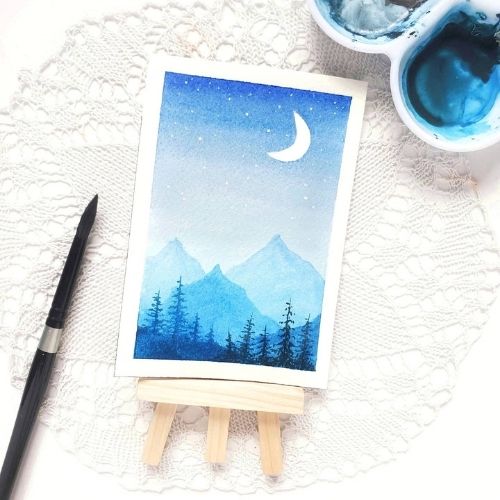


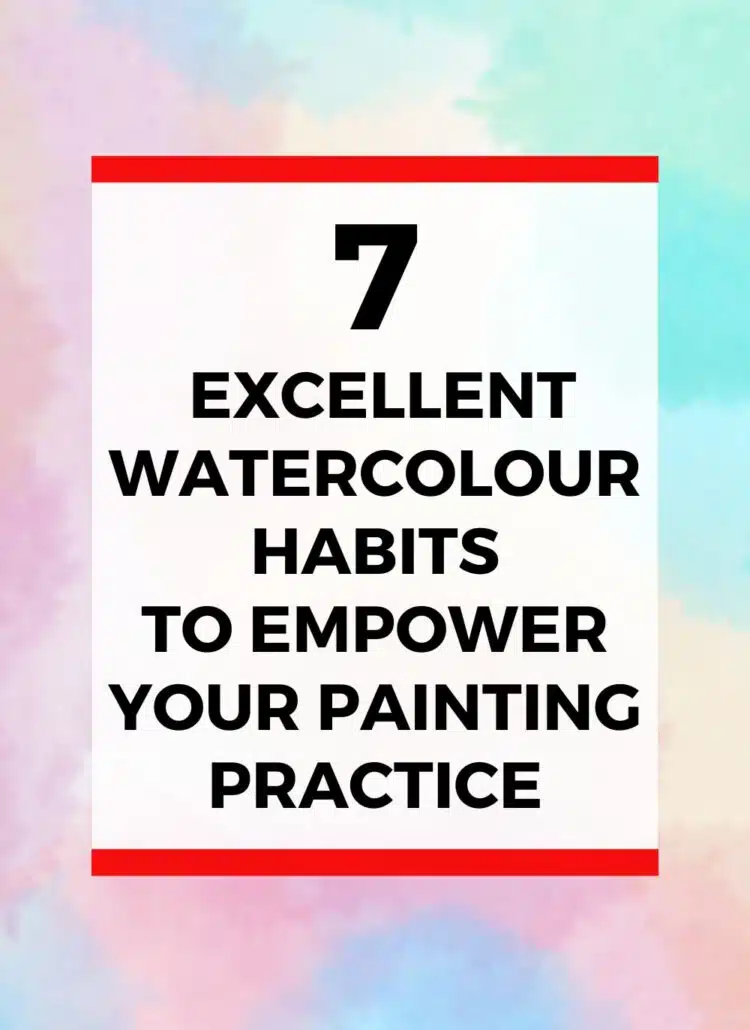
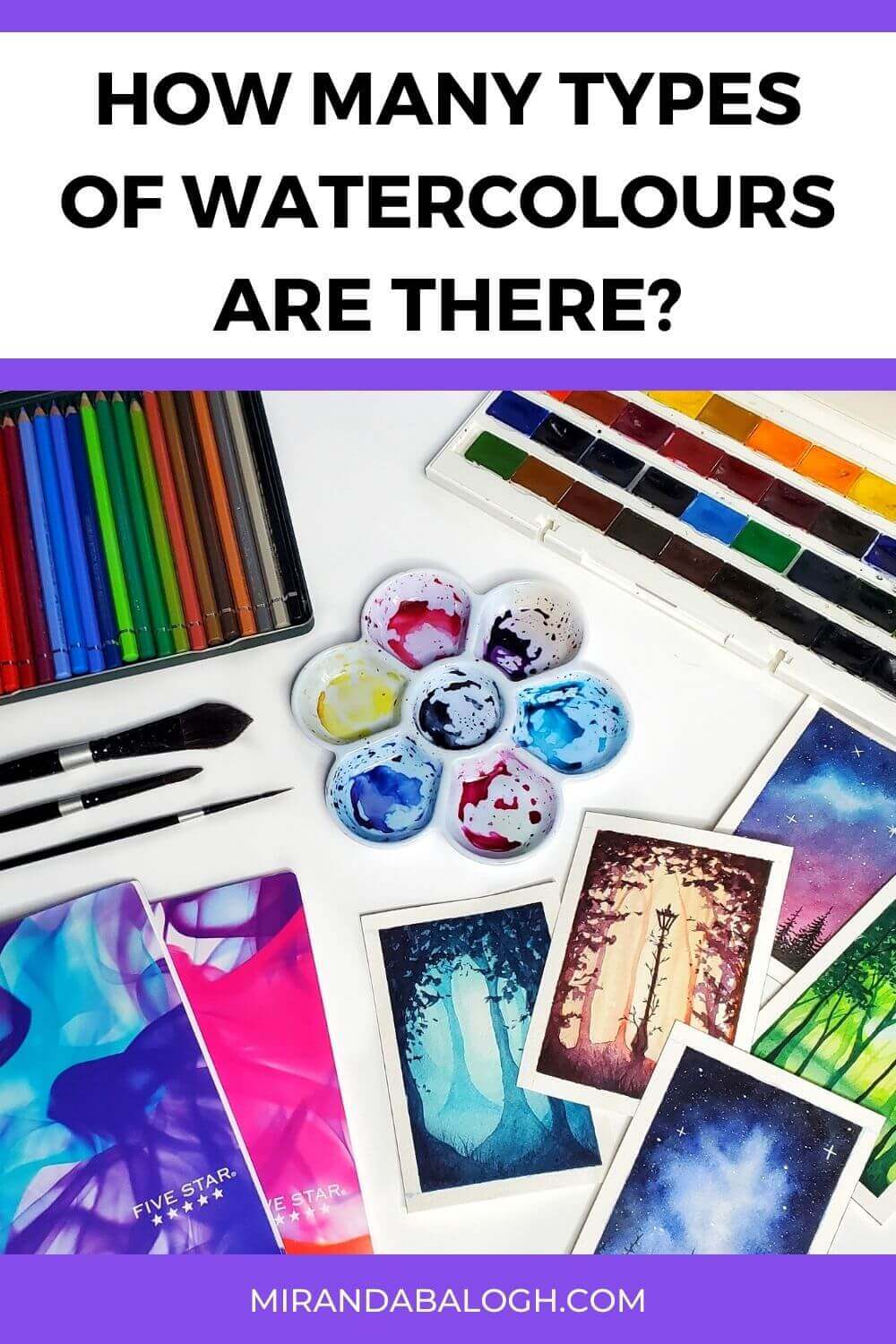
This was very informative! I’m most definitely an overworker with watercolour. Haha. Will have to take your advice and try again. Thank you for sharing this. 😊
Thank you! I overwork watercolour paintings too, so you’re not alone! The best we an do is learn to trust the process and appreciate our paintings without trying to make them “perfect”.
Thanks for sharing these tips. I’m more in the digital sector nowadays but occasionally I’m coming back to the traditional techniques. This article will be very useful for me. Btw. very nice blog!
Thanks, much appreciated! I think all kinds of artwork, regardless of the medium, can be overworked. So use these tip when you create digital art and I’m sure you’ll notice a difference.
I tend to overwork when I am painting a subject that has scientific importance and the details and proportions help to identify the subject. When I am painting landscapes, a trick I learned is to simplify the background/foreground to fewer brushstrokes and then leave it alone. Overall value is the most important. I might try the single color value study. Seems like a great idea.
Yes, I agree that value is the most important aspect of a painting! And your trick about using fewer brushstrokes is also very useful, so thank you for sharing your tips.